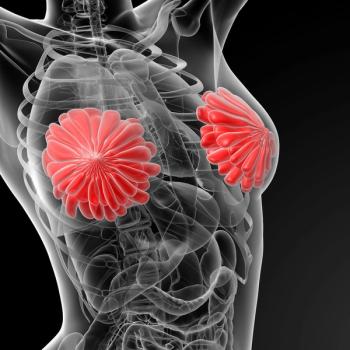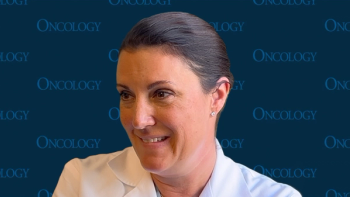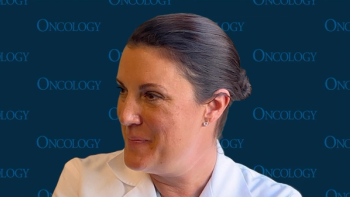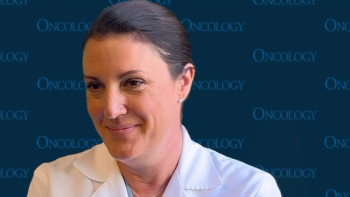
Preventive Tamoxifen Lowers Rate of ER-Positive Breast Cancer
Tamoxifen given to women at high risk for breast cancer lowered the rate of estrogen receptor (ER)-positive breast cancer diagnosis in the IBIS-I trial.
Tamoxifen given to women at high risk for breast cancer significantly lowered the rate of breast cancer diagnosis in the International Breast Cancer Intervention Study-I (IBIS-I) trial. The reduction in breast cancer incidence held up over a median 16-year follow-up period.
Tamoxifen resulted in a 29% reduction in breast cancer compared with placebo, and the rates of estrogen receptor (ER)-positive breast cancer were reduced by 35%. Tamoxifen had no effect on ER-negative breast cancers.
The results of the trial were presented by Jack Cuzick, PhD, professor of epidemiology at the Wolfson Institute of Preventive Medicine at Queen Mary University of London, at the 2014 San Antonio Breast Cancer Symposium (SABCS), held December 9–13 in San Antonio, Texas.
Cuzick noted that while there is some evidence for aspirin in cancer prevention, tamoxifen is the “only clear case in which preventative activity will produce such a long benefit.”
There were concerns about increased endometrial cancer risk, and patients also had a higher incidence of non-melanoma, low mortality–risk skin cancers. Nine cases of endometrial cancers occurred during the active treatment window. However, according to Cuzick, the endometrial cancer risk was statistically non-significant, meaning that it could be a chance observation. Rates of colorectal cancers were lower in the tamoxifen-treated group compared with the placebo group.
Women in the tamoxifen group had a small, non-significant increase in all-cause mortality.
There were no differences in breast-cancer related mortality rates between the two groups so far (26 deaths in the placebo arm compared with 31 in the tamoxifen arm; odds ratio = 1.19). After a median follow-up of 16 years, 246 women given tamoxifen compared with 343 women in the placebo group developed breast cancer. “Less than 10% of the women who had breast cancer died of the disease,” said Cuzick, but also stated that any conclusions about breast cancer deaths will likely take another 10 years of follow-up.
The IBIS-I trial randomized 7,154 pre- and post-menopausal women to receive either a daily 20 mg dose of tamoxifen for 5 years or placebo. Women in the study had a high risk of breast cancer, due mostly to a family history of the disease, and were all between the ages of 35 and 70. On average, women were 50.8 years of age when they entered the study, and about 54% were post-menopausal in both trial arms.
After 10 years, 4.6% of women in the tamoxifen arm were diagnosed with breast cancer compared with 6.3% in the control arm-a 28% reduction in incidence. Fifty-nine women had to be treated to prevent a single case of breast cancer.
“With an additional 10 years of follow-up, we now have substantially larger differences,” said Cuzick.
After 20 years, 3.3% of women in the tamoxifen arm were diagnosed with breast cancer compared to 6.3% in the control arm-a 30% reduction in overall incidence. Twenty-two women had to be treated to prevent a single case of breast cancer over the 20-year period. “This is very favorable compared to any preventive treatment for [heart disease or other diseases],” said Cuzick.
Whether patients were on hormone replacement therapy (HRT) turned out to be important, Cuzick noted, as only those women not on HRT had a beneficial effect from tamoxifen (P = .04). Women who did not take HRT had a 45% reduction in ER-positive disease and 38% reduction in breast cancer overall.
“Women who did not use HRT had a much bigger benefit from tamoxifen than those women who did,” said Cuzick. A total of 49.5% of patients in the control arm and 40.9% of patients in the tamoxifen arm were on HRT while on trial.
Prior tamoxifen showed a clear benefits of about 30% to 35% in the first 10 years of follow-up, said Cuzick during his presentation. The current trial is unique in its long-term follow-up of patients-most patients were followed for almost 20 years with the longest patient follow-up being 22 years.
With a current median age of 66, Cuzick noted that there is still substantial follow-up remaining for the women on this trial.
Reference
1. Cuzick J, Sestak I, Cawthorn S, et al. 16 year long-term follow-up of the IBIS-I breast cancer prevention trial. Presented at 2014 San Antonio Breast Cancer Symposium; December 9-13, 2014; San Antonio, Texas. Abstract S3-07.
Newsletter
Stay up to date on recent advances in the multidisciplinary approach to cancer.

















































































